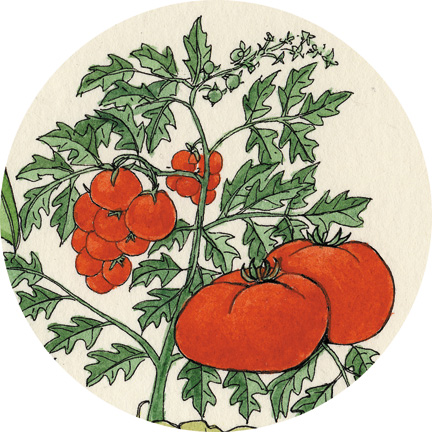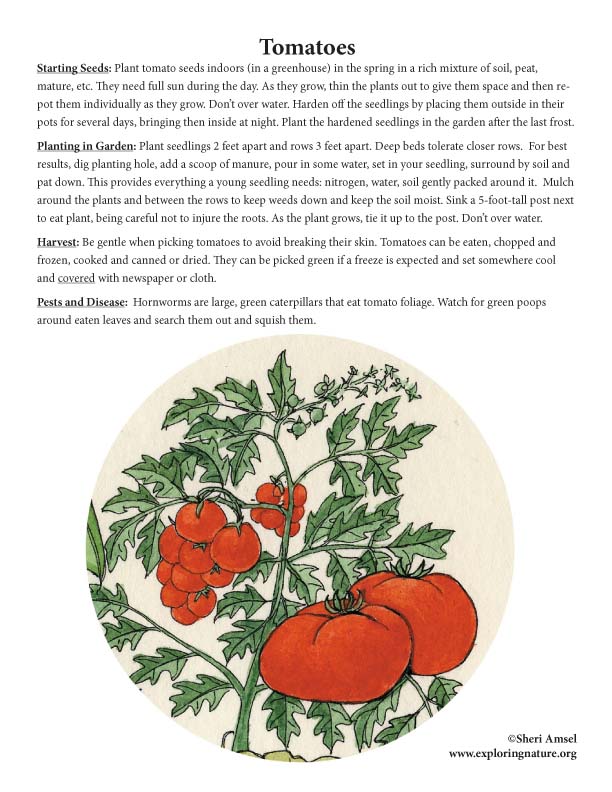

Starting Seeds: Plant tomato seeds indoors (in a greenhouse) in the spring in a rich mixture of soil, peat, mature, etc. They need full sun during the day. As they grow, thin the plants out to give them space and then re-pot them individually as they grow. Don’t over water. Harden off the seedlings by placing them outside in their pots for several days, bringing then inside at night. Plant the hardened seedlings in the garden after the last frost.
Planting in Garden: Plant seedlings 2 feet apart and rows 3 feet apart. Deep beds tolerate closer rows. For best results, dig planting hole, add a scoop of manure, pour in some water, set in your seedling, surround by soil and pat down. This provides everything a young seedling needs: nitrogen, water, soil gently packed around it. Mulch around the plants and between the rows to keep weeds down and keep the soil moist. Sink a 5-foot-tall post next to eat plant, being careful not to injure the roots. As the plant grows, tie it up to the post. Don’t over water.
Harvest: Be gentle when picking tomatoes to avoid breaking their skin. Tomatoes can be eaten, chopped and frozen, cooked and canned or dried. They can be picked green if a freeze is expected and set somewhere cool and covered with newspaper or cloth.
Pests and Disease: Hornworms are large, green caterpillars that eat tomato foliage. Watch for green poops around eaten leaves and search them out and squish them.

